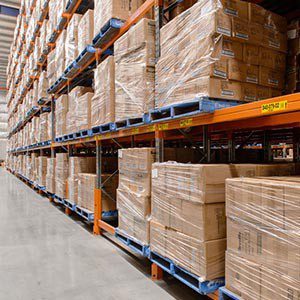What Happens At A Pallet Racking Inspection
If your business has pallet racking, you’re probably aware that you’re required to have a pallet racking inspection every 12 months. This is a requirement of the Australian standard AS 4084:23 Steel Storage Racking. It’s important that pallet racking is inspected regularly in order to protect the safety of everyone working in a warehouse near the racking. Damaged racking can lead to injury or death of warehouse workers as well as damage to goods being stored on the racking. Because of this, keeping up with regular pallet racking inspections is the law and it’s also extremely important for both your business and everyone’s safety.
Thankfully, although a pallet racking inspection needs to be conducted by a competent person, it’s a relatively simple process with minimal disruption to a business. The core of the inspection is simply looking for any damage to the pallet racking and ensuring that there is certified safe working load signage installed on the racking.
Here’s the more in depth process of pallet racking safety inspections.
The Actual Pallet Racking Inspection
During the actual pallet racking inspection we look at and inspect every piece of pallet racking. Here we’re looking for obvious signs of damage and wear and tear. This damage may have been caused by collisions with materials handling equipment like forklifts, accidental overloading, or just the general knocks of being in an industrial setting.
Beyond the more obvious damage, we also look for any beam and post warping and twisting. This is often caused by the overloading of pallet racks. Overloading is usually accidental, and regular pallet racking inspections are a good reminder to everyone in a warehouse to be vigilant about it.
While inspecting warping and damage, we also look for any loose beams or dislodgements. These are less common, but even the most professionally installed racking beams can become dislodged if they get hit often with pallets and equipment.
The final thing we look for during a pallet racking inspection is any corrosion or rust. This is more common in older pallet racking.
During the inspection, we take pictures of any defects we have found as well as general pictures of the site so that we can report back on any other safety issues that should be rectified.
You Get A Report Of What Needs To Be Fixed
After the inspection, we create a full report on the condition of your pallet racking. This report also outlines what needs to be fixed under three classifications:
- Red: these are the very serious defects that need to be fixed immediately. The pallet racking needs to be unloaded until it’s fixed.
- Yellow: these are hazardous defects that need to be fixed soon, but the pallet racking can continue to operate.
- Green: this is an acceptable amount of damage that should be monitored.
Although you’ve performed your obligation under AS 4084:23 to have your pallet racking inspected, it can’t be certified until the issues outlined are rectified.
Safety Issues With Pallet Racking Are Rectified
Part of the pallet racking inspection report that you receive is a quote to complete the rectification work. As mentioned, it’s important that any issues identified from the pallet racking are fixed quickly. Not only is the damage identified a safety issue, but the pallet racking also can not be certified until it’s fixed.
Pallet Racking Is Certified For Another Year
With the pallet racking fixed, it’s fit for another year before it needs to be inspected again.
All of this is not to say that every pallet racking inspection will find damage or issue that need to be fixed. It’s not uncommon for us to do a pallet racking inspection and find it in great condition with no issues at all. Obviously this is ideal for everybody.
If warehouse staff are well trained, avoid hitting pallet racking with materials handling equipment, and pallet racking protection is installed, a lot of damage can be avoided. This can greatly increase the lifespan of pallet racking while also diminishing the downtime created by damage and the repairs required.


Comments are closed.